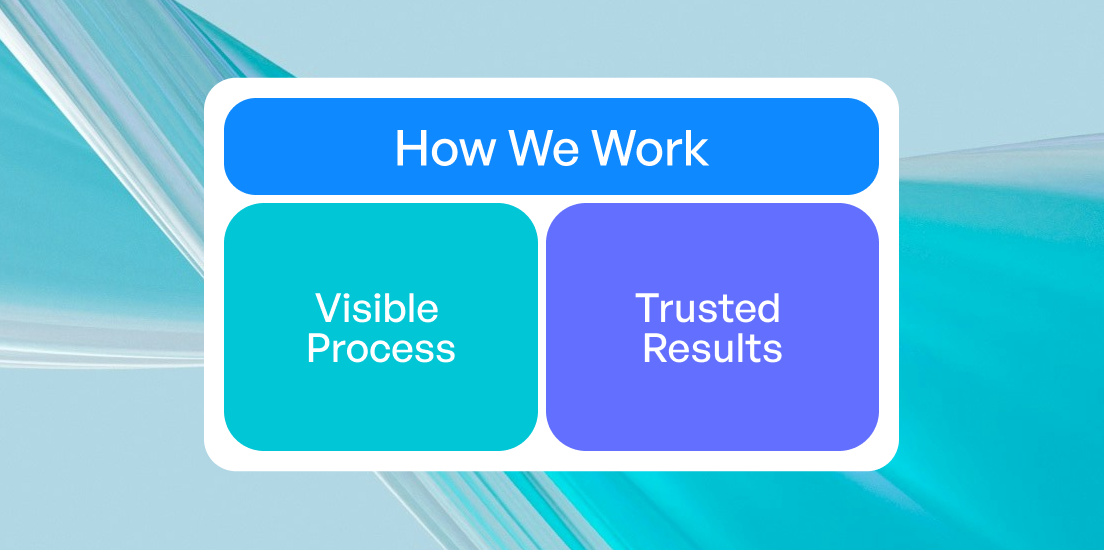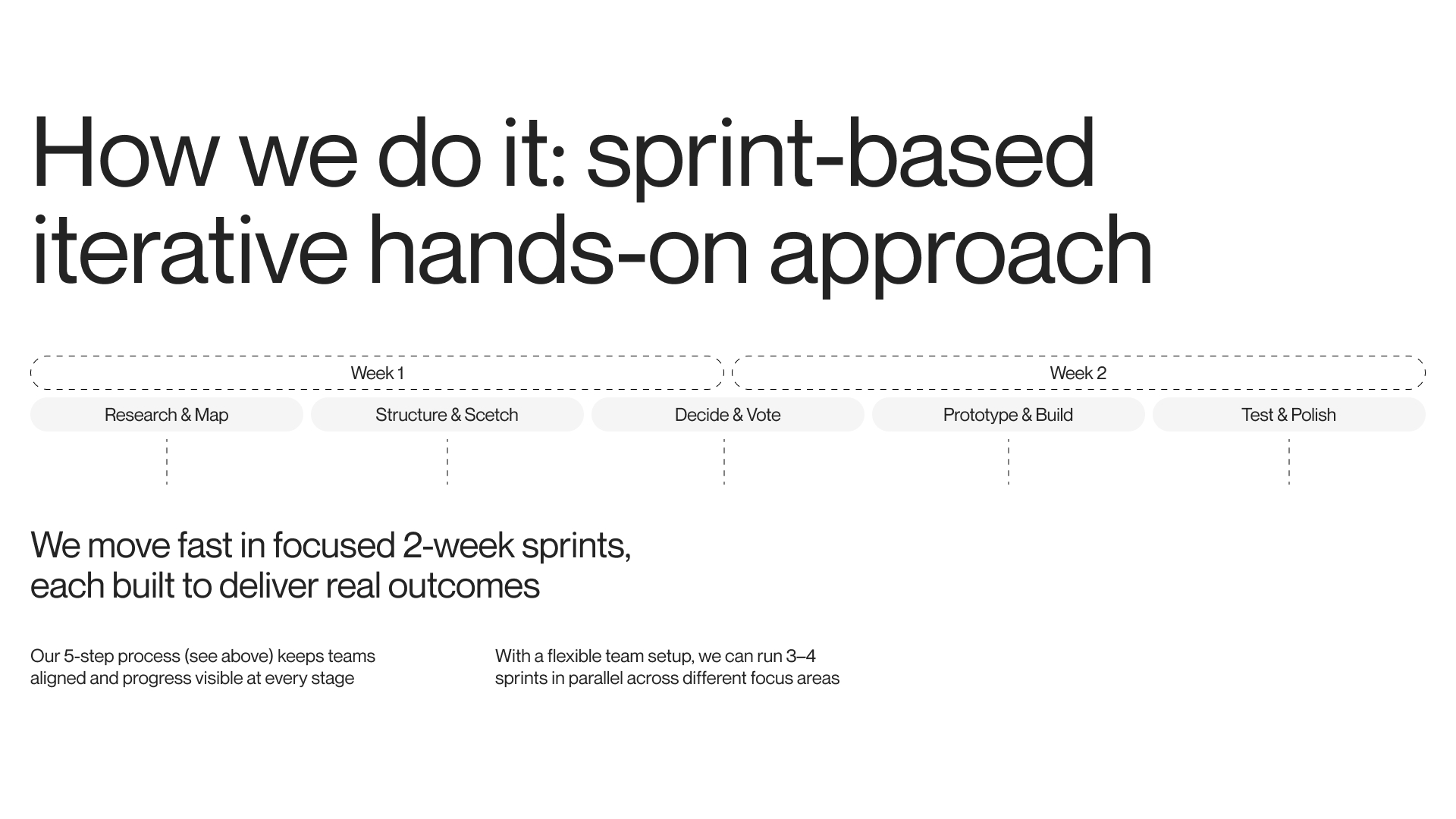Inside Our Process: How We Work With Your Team

Building a strong presentation is not just about good slides. It relies on the way people work together, test ideas and stay aligned when deadlines and stakes get serious.
Process that stays visible
At Prznt Perfect, our workflow stays open and easy to follow. Clients are part of the team, not just an audience waiting for a finished file. Clear steps lead to clearer results and no last-minute surprises.
This happens through regular calls (two to four per week if needed), updates in your preferred messenger and a live Figma file that shows exactly what is being shaped — slides, visuals, notes and comments, all visible.
One reference we like is Sprint by Jake Knapp (Google Ventures). The sprint-based method shaped how we break down work: small visible steps, quick feedback and real outcomes each week.

Hands-on and collaborative
Most projects move in short, focused sprints. Research, mapping, structure, sketch, decide, build, test — each loop keeps everyone aligned.
When we worked on the semiconductor pitch deck, this process helped engineers, founders and our team stay on the same page. The result was no confusion and no lost context.
In the Auto-Tech Deck, the same method turned raw specs and roadmaps into visuals that made sense for partners while keeping the technical story strong.
Smooth integration
Sometimes we join as an extra arm for your in-house team. Strategy workshops, design audits, storytelling training or just a clear outside view — small or large groups, two or twenty people, we adapt to what you need.
Books like Team of Teams by General Stanley McChrystal and Radical Candor by Kim Scott shape how we think about staying open and direct. Clear roles, honest feedback and everyone seeing the same version of the work.
The right people, right when you need them
We adjust the team based on the project. From art direction to research, design to production, you get the mix that fits. Our job is to stay connected, give updates and keep ownership clear at each step.
Build with us
If you want a partner who stays involved through all the rough drafts and decision points, not just the final slides, we are here to help.
See our case studies or get in touch to talk about your next pitch, deck or training.
Keep reading
You might also like:
→ Creating a Visual Language That Scales With Your Business
→ Designing Presentations For Experts

- This is some text inside of a div block.lay out the facts clearly and compellingly. Use data to establish the ground reality, but remember that facts alone are like the individual strands of a tapestry—necessary but not complete.lay out the facts clearly and compellingly. Use data to establish the ground reality, but remember that facts alone are like the individual strands of a tapestry—necessary but not complete.
- This is some text inside of a div block.lay out the facts clearly and compellingly. Use data to establish the ground reality, but remember that facts alone are like the individual strands of a tapestry—necessary but not complete.




